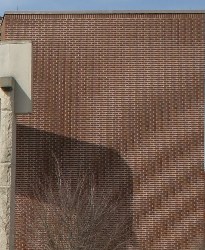Quote:
Originally Posted by Anthony P

not if it is not done properly (and no set will be 100% properly deinterlaced)
I am not saying it will always happen (like original i) but it will happen sometimes and when it does it will be like something filmed at 1080i.
I just don't get this easygoing "good enough" attitude. why accept pip when there is a possibility that something will go wrong when you can have ppp and make sure nothing goes wrong.
|
+1
De-interlacing is NEVER perfect, even Dale Adams says that. Its easy to assume that performing cadence detection and weaving the right lines will restore the original image without loss, but it's not as simple as that.
It's been long established that successful de-interlacing requires blind film and cadence detection, as field and frame flagging is not reliable. The DI has to do this by reading the picture in each field, and detecting quickly and reliably whether there is any motion in the original subject between adjacent fields.
This has two functions. Firstly, the DI has to detect whether the original material was film or video (progressive or interlaced), so that the right DI process can be used. Secondly, if it IS film, the cadence has to be detected so the right fields are paired up for weaving, and the duplicated fields discarded for the pull-down process.
Even when inverse-telecine is being applied to a film, the DI still continues to perform film detection, and the key point is that it sometimes gets it wrong. That means film may be detected and de-interlaced as video (losing resolution) or the cadence may be lost and wrong fields woven together (giving combing artifacts).
Equally, video material may be detected as film, and weaving is applied when it shouldn't. De-interlacing is an art, and getting it right means getting the right balance between speed and reliability of detection, and between film and video performance. The best de-interlacers can do this well, by which I mean the HQV, VRS, VXP, Pixelworks and Qdeo processors, but MOST still do all this poorly. By most, I include nearly all Blu-ray players (including the PS3) and more HD DVD players than Toshiba would have you believe.
Therefore 1080i can be acceptably close to 1080p, but in practice it
often isn't (even
usually isn't) but even in the best of systems it's never exactly the same as 1080p. Where proper 1080p is available (from BD or HD players) then although the difference may be small, it will always be best. Aside from de-interlacing issues, there are other reasons why 1080i is poorer, and 1080p can also avoid these issues.
Nick





















 - moire example
- moire example









 Linear Mode
Linear Mode

